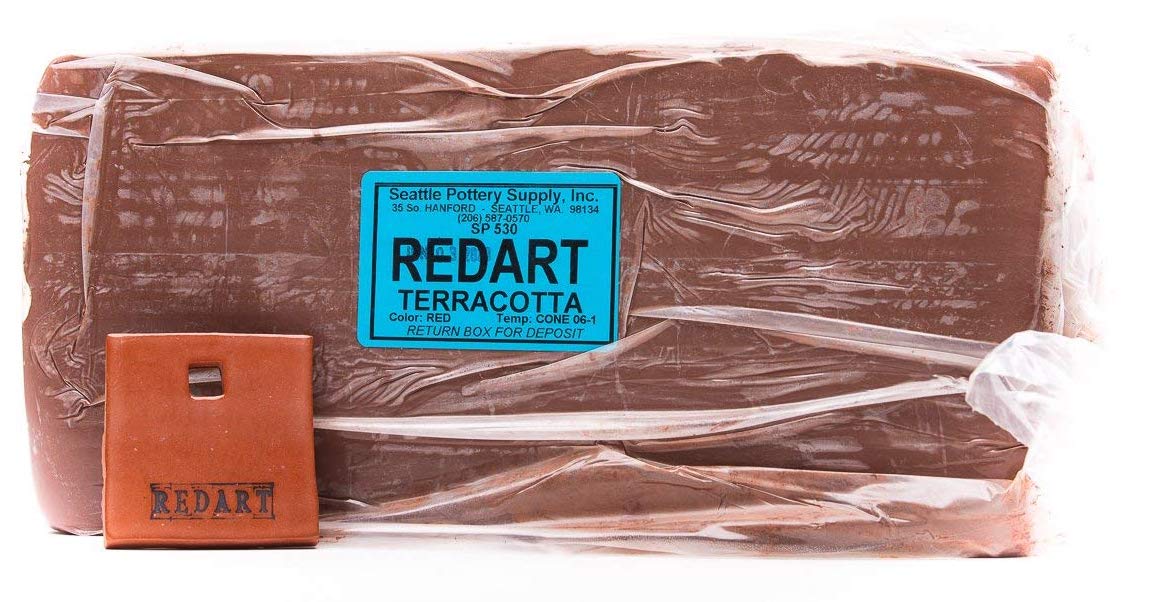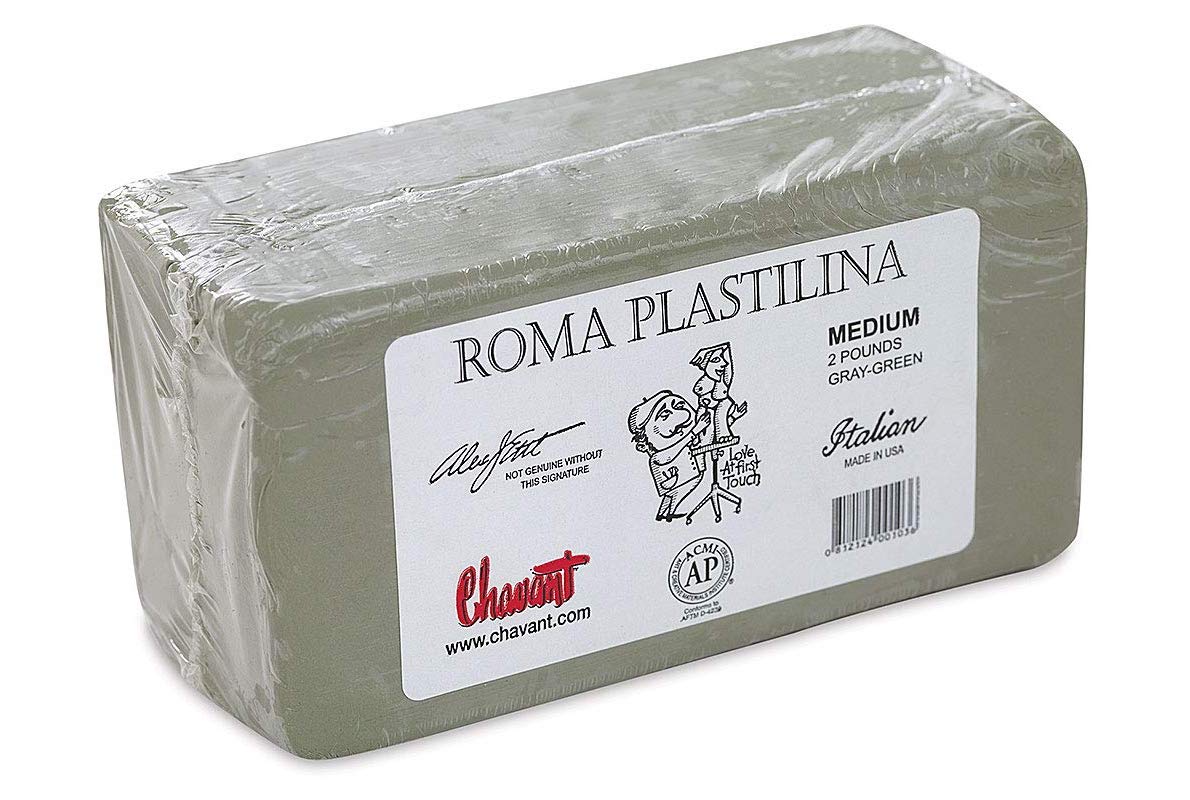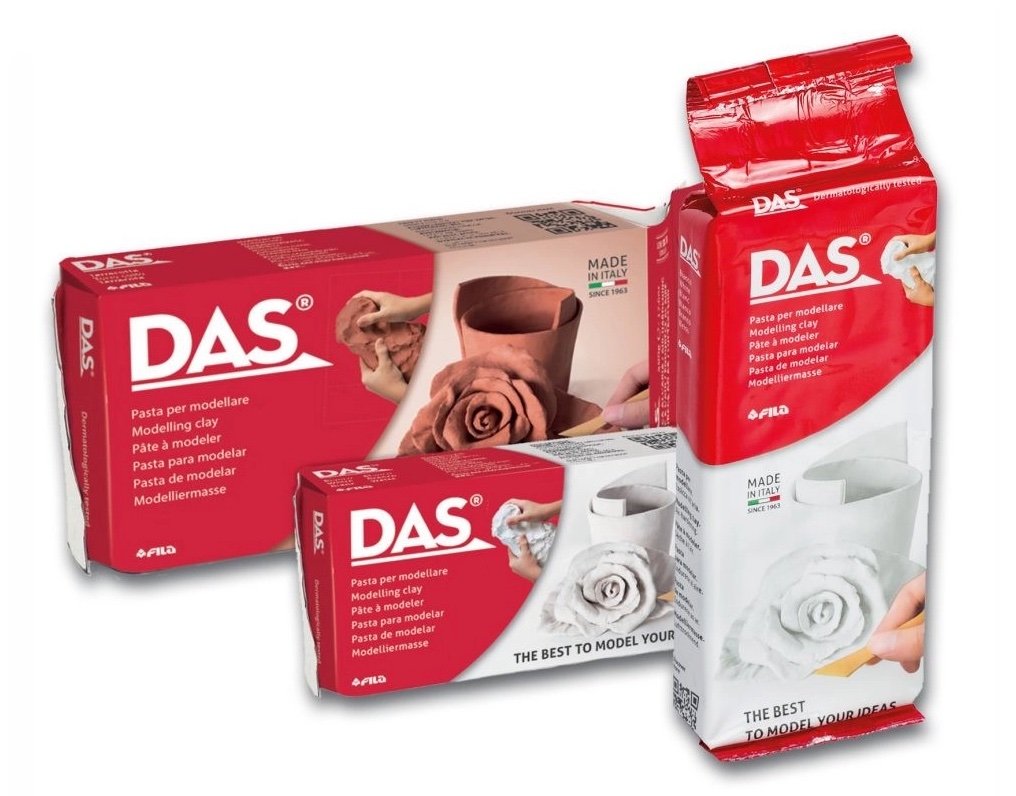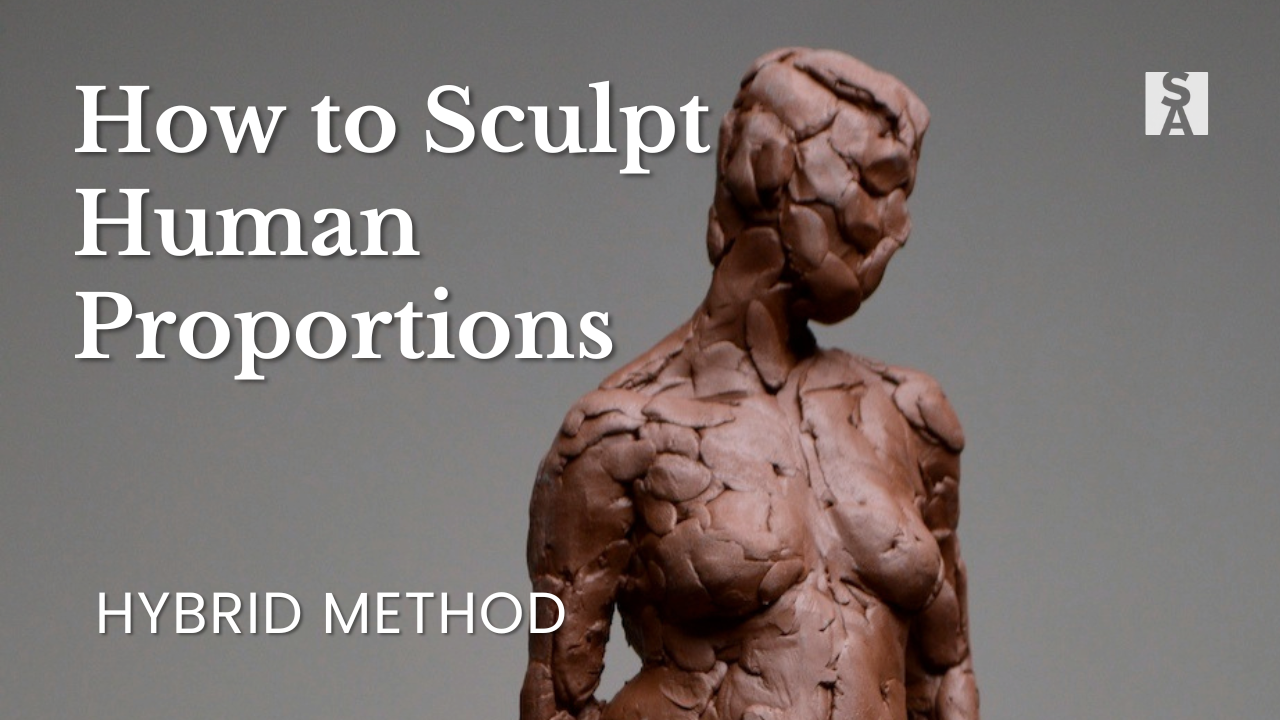What Clay is Best for Sculpting the Figure?

TABLE OF CONTENTS:
Introduction: Choosing the Best Clay for Sculpting
Water-Based Clay: Ideal for Human Figures
Oil-Based Clay: Best for Maquettes and Moldmaking
Air-Dry Clay: Best for Small Projects
How to Choose The Best Clay
Additional Resources for Figure Sculptors
Choosing the Right Clay for Sculpting
If you are looking to begin sculpture as a new medium, you are probably asking yourself:
“What clay should I use to start sculpting?”
The truth is, when it comes to learning classical sculpture, choosing the right type of clay is essential, especially for beginners. With a wide variety of options available, it can be overwhelming to decide which one to use.
Water-Based, Oil-Based , and Air-Dry Clay: Pros & Cons
In this guide, I'll compare and contrast the pros and cons of the three most common types of clay: water-based, oil-based, and air dry. I have personally used all three and will share some of my tips for beginners.
Whether you're just starting out or looking to enhance your sculpting skills, this article will help you make an informed decision based on real studio experience.
Best Clay for Sculpting the Human Figure: Water-Based Clay for Beginners

If your goal is to sculpt realistic portraits or figures, water-based clay is the best choice for mastering foundational form, gesture, and proportion.
Water-based modelling clay is also known as earthenware or pottery clay, and it is a versatile option for creating both simple sculptures as well as intricate details and complex shapes.
Its working properties are controlled by moisture which allows you to create forms very quickly when it is soft and pliable, and to refine details as the clay progressively hardens. It needs to be kept at the right moisture level to keep it workable and prevent cracking during the sculpting process.
👉 Want a full walkthrough of how to sculpt with water-based clay?
Join the free beginner’s workshop here
Water-based clay requires firing in a ceramic kiln to achieve permanent durability. It can also be molded and cast to create an edition in another material (such as bronze or plaster).
Professional sculptors often prefer water-based clay for its malleability and its ability to hold fine details. It arguably has the best "feeling" when you are working with it, due to it's natural qualities that are responsive to the touch.
It also offers a wide variety of surface finishes, as fired ceramic can be be left natural (such as terracotta), glazed with a multitude of colors, or cold finished with acrylic paint and pigments.
My online figure sculpting courses teach you how to sculpt in water-based clay and how to prepare it for kiln firing, as I personally believe it is the best type of clay to learn sculpting. It's easily accessible, quite affordable, and very satisfying to work with. PLUS if you learn to hollow and fire it can result in permanent artwork (without the complication of molding!)
Want to learn more? Here’s a detailed guide on sculpting the human figure.
Tips for Using Water-Based Clay:
- Keep a spray bottle of water nearby to mist the clay as needed to prevent it from drying out and cracking.
- Maintain the moisture of the clay by covering your sculpture with a damp cloth when not working on it.
- Beginners are recommended to choose a low-fire sculpture clay with a fine grog for maximum stability and workability.
Get the Sculpting in Clay Tool Guide:

Best Clay for Maquettes, Moldmaking, and Studio Studies: Oil-Based Clay (Plastilina)

Oil-based clay, also known as plastilina or modeling clay, remains pliable and never dries out, making it ideal for creating clay models for moldmaking, and maquettes.
This type of clay is popular among professional sculptors due to its flexibility and ability to hold precise shapes. However, it's important to note that because oil-based clay does not harden, it requires the additional process of mold making and casting in order to create permanent sculptures. The complexity and expense of the molding and casting process can be daunting for beginner sculptors.
The pliability of oil-based clay depends on heat (instead of moisture). Each brand offers variations in hardness or melting points, allowing you to choose the clay that best suits your specific sculpting needs.
Some of the top brands that offer high-quality oil-based clay options for sculptors include Chavant NSP, Van Aken Plastalina, Monster Clay, and Roma Plastilina. These brands are trusted by both professionals and enthusiasts alike for their consistent texture, pliability, and ability to hold intricate details.
Tips for Using Oil-Based Clay:
- Keep your workspace clean and free of debris, as oil-based clay can easily pick up dust and dirt.
- Use a heat box, microwave, or heat lamp to warm your clay as you are sculpting.
- Be mindful of clays that include sulfur, as it can inhibit the curing of some types of silicon rubber during the mold-making process.
Best Clay for Small Projects and Miniatures: Air-Dry Clay

Many beginners are drawn to air-dry clay because of its promise of convenience—you don’t need a kiln or mold-making setup, and it hardens on its own. For small decorative pieces or simple craft projects, it can be a great material to explore.
However, if your goal is to sculpt the human figure with gesture, structure, and detail, air-dry clay presents several limitations. Its reduced malleability makes it harder to build complex forms, and it’s prone to shrinkage, which can lead to cracking or even warping. These issues make it less suitable for larger or more refined figurative work.
There are also variations, such as polymer clays like Sculpey, which can be baked in a home oven. These materials offer a different set of properties and are popular among hobbyists who prefer the convenience of baking over kiln-firing or mold making. Polymer clays can be quite expensive and are most often used for miniature sculptures.
For classical figurative sculpture, air-dry clay is generally not recommended. That’s why professional sculptors working on portrait or figure-based work typically opt for either water-based or oil-based clays that provide greater control, flexibility, and working time.
If you do choose to try air-dry clay for smaller pieces, here are a few tips to improve your results:
Tips for Using Air Dry Clay:
- Keep your sculptures small and simple to minimize the risk of cracking or warping.
- To prevent drying too quickly, cover your sculpture with a damp cloth and cover with plastic.
- If you are using a polymer clay like Sculpey, follow the manufacturer's instructions for baking times and temperatures to ensure proper hardening.
How to Choose the Best Clay for Your First Sculpture
Still unsure which clay to start with? Here's a simple way to decide, based on your goals and how you want to sculpt.
Water-Based Clay
Choose this if:
You want to sculpt realistic figures, learn foundational skills, and experience the tactile satisfaction of working directly with your hands.
Water-based clay is ideal for beginners serious about learning form, gesture, and proportion. It’s affordable, responsive, and easy to shape when fresh - however it does require some maintenance to prevent drying and cracking.
Want help setting up your studio for water-based clay?
Join the free 3-day beginner series here for a complete walkthrough of tools, setup, and how to create your first simple project.
Oil-Based Clay (Plastilina)
Choose this if:
You plan to mold and cast your sculpture, or want a material that stays soft for long periods without needing moisture.
Oil-based clay is great for maquettes, studio studies and professional sculptors who want to cast editions of their work, but it isn’t ideal for beginners who want to create permanent sculptures without the added cost and complication of moldmaking. Some brands can also feel waxy or sticky depending on the temperature and your workspace.
Air-Dry Clay
Choose this if:
You’re making small, decorative pieces and want a quick, no-kiln option.
Air-dry clay can be fun for casual sculpting or craft-scale projects, but it has limits. It is costly, can crack or warp, and doesn’t offer the workability needed for larger or more detailed figurative work.
More Figure Sculpting Resources
If you're ready to go further, here are some next steps to help you build your skills and confidence in the studio:
- Free Beginner Sculpting Workshop: Learn how to set up your space, choose tools, and sculpt your first project step-by-step.
- Sculpting Tool Guide PDF: Download the full list of tools I recommend for starting out in traditional clay.
- Figure Sculpting Course (Atelier Program): A complete online learning path for sculptors who want to master foundational techniques and create powerful figurative work.
These resources are designed to help you grow, whether you're just getting started or already exploring sculpture in a more focused way.
ARE YOU ON THE LIST?
Online Atelier Program for Sculpture:
Master the foundations of traditional clay figure sculpting.
Next Enrolment January 2026.
Enter Your Details Below to Get Notified:
You can unsubscribe at any time.





